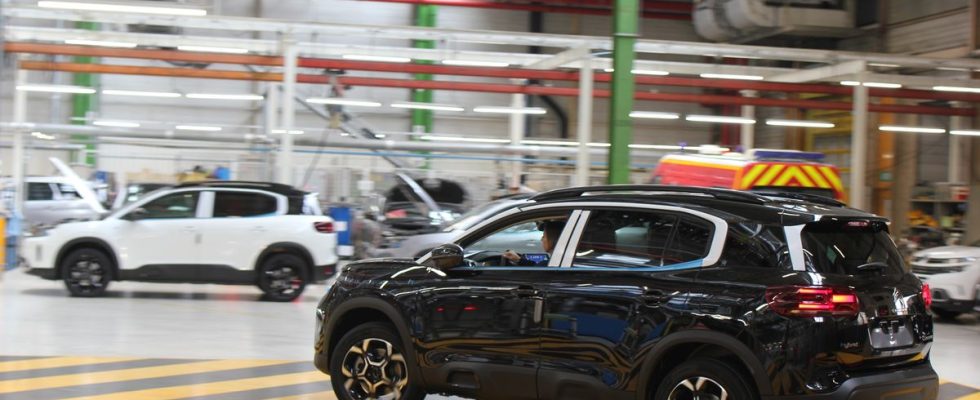The site is added to the catalog of visits from the Rennes Métropole tourist office. Its exterior appearance, however, has nothing to compare with the gilding of the Parliament of Brittany, with the half-timbering of the historic center, the woodwork of Saint-Pierre Cathedral or the changing rooms of Roazhon Park. From Thursday May 4, the Stellantis plant in La Janais will be part of tourist visits offered by Destination Rennes. And it’s a safe bet that the industrial site is one of the most requested by the inhabitants of the territory. “By opening the factory, we want to reconnect with the territory. We can also encourage vocations. How can you understand a profession without having seen it with your own eyes? », asks the director of the Stellantis site Etienne Martin-Commandeur.
Whether they are former employees, car enthusiasts or simply curious, all visitors dream of pushing the doors of the emblematic factory of Chartres-de-Bretagne to discover the backstage of the manufacture of Peugeot and Citroën cars. What they will see there will undoubtedly surprise them as the factory of the French car manufacturer has evolved in recent years. Here are some secrets that 20 minutes was able to break through during a privileged visit.
An incessant ballet of robots
They are everywhere. The AGVs for “automatic guided vehicles” are the main drivers of the Janais plant. Inaugurated in 1960 by General de Gaulle, the Citroën factory, which became PSA and then Stellantis, has constantly had to evolve to integrate new technologies. To bring the parts to the assembly lines, robots now work with a “full kitting” system. Following a path on the ground, they circulate in the huge 40,000 m² workshop to bring everything that a car can have. “Our ambition is to limit our carbon footprint to make La Janais a green factory. We are working in particular on compacting our surface in order to limit our footprint and thus reduce our consumption,” explains the plant manager.
flying cars
To circulate in the factory, the future Citroën C5 and the 5008 remain perched for a long time several meters from the ground, in order to leave the circulation of machines and employees on the ground. Taken by a system of rails, the bodies start bare, before being gradually fitted with doors and roofs before being painted. They then receive their engine, their windows and their complex interior fittings. They are sometimes impressive robots that perform the tasks, such as the installation of doors. As the vehicle advances, it is men and women who take care of equipping them.
A rather quiet factory
We did not visit the stamping, forging and painting workshops, but we were struck by the calm that reigned in the assembly workshop. Even without hearing protection, the noise is perfectly controlled thanks to the automated lines. Entirely redesigned in 2018, the Janais plant produces 410 vehicles per day with 2,000 employees divided into two teams. Last year, 73,000 Citroën C5 Aircross and Peugeot 5008 left the Chartres-de-Bretagne site. It is much much much less than in the past. In 2005, 345,000 vehicles were built, including C6s and 407s.
Make way for the tropical shower
This is one of the last checks before leaving the vehicle. In a closed cabin, the cars spend a few minutes under a torrent of water. “It’s a real tropical shower. If we were driving in these conditions, we would have to stop because we wouldn’t see anything,” explains the Stellantis employee who is guiding us. This workshop serves as a watertightness test, in order to verify that the vehicle is well sealed against water and humidity. After passing through the cyclone, the car is opened by employees who check that the water has not infiltrated, before it leaves the factory to be shipped.
Two minutes per stain
In the assembly plant, a vehicle arrives every two minutes to pass through the hands of the employees. To prevent this assembly line work from being too monotonous, the workers regularly change jobs. “They are trained for at least three or four positions,” explains the site manager. To announce the break, a little music resounds throughout the workshop. Today, two day shifts take turns to produce the cars. The rest of the time, the lines are at a standstill.
Whose are these bikes?
In the middle of the empire of the car, you can sometimes cross paths with an employee pedaling among robots. “The only people who are allowed to use the bikes are those who work in maintenance. They must intervene quickly to allow the line to be relaunched as quickly as possible”. Four hundred people work simultaneously on the line. A stoppage, even a short one, is always a bad experience in a factory where everything is regulated by the second.

